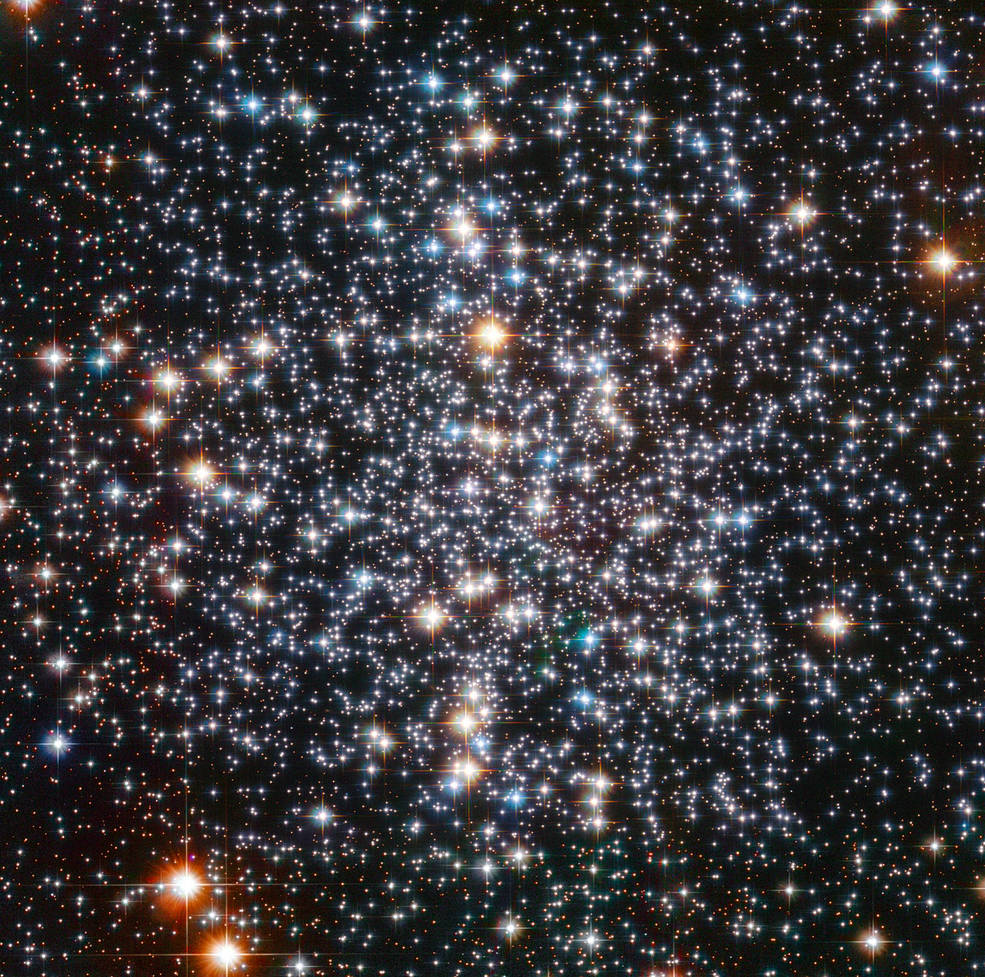When looking in the sky, there are several easy and well known globular cluster that are visible from the Pacific Northwest and other Northern Hemisphere observing locations.
M13 Hercules Globular Cluster

When Visible: May to September, with ideal conditions being in July.
How To Find: The Messier 13 cluster is located near NGC 6207, a 12th magnitude galaxy seen edge-on. The galaxy can be seen 28 arc minutes northeast of M13. Another galaxy, IC 4617, lies between the two, to the north-northeast of M13’s center.
How It Looks: To the naked eye, the Hercules Cluster appears as a fuzzy star. Binoculars will reveal a comet-like hazy patch with a clear centre, while 4 to 6-inch telescopes will begin to resolve the stars in the cluster. Instruments with larger apertures will resolve stars across the entire cluster.
Fun Fact: M13 was originally discovered by Edmond Halley in 1714. In his notes, he wrote of the cluster: “This is but a little Patch, but it shews it self to the naked Eye, when the Sky is serene and the Moon absent.”
Messier 2
When Visible: June to December, with ideal times being July to October
How To Find: M2 can be found in the Aquarius constellation, five degrees north of the star Beta Aquarii.
How It Looks: The globular cluster can be observed in binoculars and small telescopes, but individual stars can only be seen in larger instruments, starting with 6-inch telescopes. A peculiar dark lane can be seen crossing the northeast edge of the cluster in larger telescopes.
Fun Fact: M2 was discovered by the French astronomer Jean-Dominique Maraldi in 1746 while observing a comet with Jacques Cassini. It was first believed that this cluster was non-stellar because when viewed with a smaller telescope.
Messier 3
When Visible: January to June, with ideal times being April, May, and June
How To Find: Messier 3 can be found halfway from the bright star Arcturus in Boötes constellation to Cor Caroli in Canes Venatici. It lies about 6 degrees north-northeast of Beta Comae Berenices, near the border between the constellations Canes Venatici and Boötes.
How It Looks: A 4-inch telescope will reveal the bright core without resolving individual stars. A 6-inch instrument will resolve some of the outer stars, while an 8-inch telescope will reveal the stars everywhere in the cluster except in the bright core region. The central region of M3 can only be resolved into stars by larger instruments, starting with telescopes with a 12-inch aperture.
Fun Fact: M3 was discovered on May 3, 1764, and became the first Messier object to be discovered by Charles Messier himself. Messier originally mistook M3 as an object for a nebula without stars, but was later corrected.
Messier 4

When Visible: May, June, and July. Ideal viewing is in June and July
How to Find: It is located only 1.3 degrees west of the bright star Antares. Please note, if observing in the late spring or summer, make sure to wait for Scorpius’ tail to rise rover the horizon.
How It Looks: It is roughly the same apparent size as the full Moon. It is visible to the naked eye, but only in exceptionally good conditions. If it weren’t obscured by clouds of dark interstellar dust, the cluster would appear far brighter. In 10×50 binoculars, the core region appears quite bright and is surrounded by a halo of light. In small instruments, M4 appears as a fuzzy patch of light, while medium to large telescopes reveal individual stars and the central bar structure.
Fun Fact: Messier 4 is one of the nearest globular clusters to Earth, and has an age of 12.2 billion years
Messier 14

When Visible: May, June, and July. Best viewing is in July.
How to Find: Messier 14 is located 0.8 degrees north and 10 degrees east of Messier 10 and about 21 degrees east and 0.4 degrees north of the star Delta Ophiuchi. It can be found about one-third of the way from Beta to Eta Ophiuchi.
The cluster can also be located along the imaginary line from Cebalrai, an orange giant with an apparent magnitude of 2.76 and the fifth brightest star in Ophiuchus, to Antares, the bright red supergiant located in Scorpius.
How It Looks: With an apparent magnitude of +7.6, M14 can be easily observed with binoculars. For those using small telescopes, the bright center and faint halo can be viewed, whereas 8-inch instruments will reveal the cluster’s elliptical shape. To resolve individual stars, you will need a 12-inch telescope or larger.
Fun Fact: Messier 14 is a globular cluster that is 13 billion years old with 150,000 stars
Messier 15
When Visible: May to November, with best viewing October.
How to Find: After locating the “Great Square” of Pegasus, simply choose its brightest and southwesternmost star – Alpha. Now identify the small, kite shape of the constellation of Delphinus. Roughly halfway between these two (and slightly south), you’ll spy a slightly reddish star – Epsilon Peg (Enif). By placing Enif in your binoculars or image correct finderscope at the 7:00 position, you can’t miss this bright, compact globular cluster.
How It Looks: Messier 15 can easily be seen in binoculars and small telescopes, but only appears as a fuzzy patch of light in smaller instruments, Even the smallest of optics will reveal the round glow and telescopes starting at 4″ will begin resolution, whereas the cluster’s stars can be resolved by 6-inch and larger telescopes. Amateur telescopes will reveal an object about 7 arc minutes in size visually.
Fun Fact:
For other astronomical objects to observe, make sure to check out the Top 5’s and other articles on CosmosPNW to help with your journey. To stay up to date with CosmosPNW, make sure to follow us on Twitter and Instagram.
Be the first to comment on "Top 6 Easiest Globular Clusters To View"